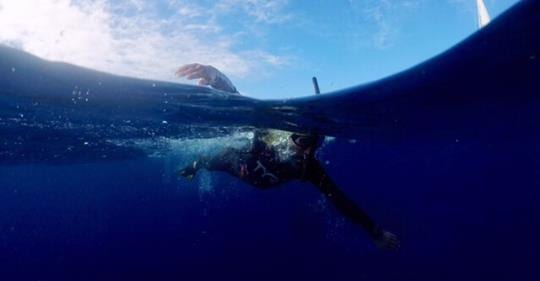Ailsa Harvey
51-year-old Ben Lecomte has reached the 1,000 nautical mile mark in his bid to become the first person to swim across the Pacific Ocean.
The Frenchman, who became the first swimmer to swim across the Atlantic Ocean without a kickboard in 1998, set off on his new mission in June. Since leaving the shores of Japan, he has spent around eight hours a day in the water, averaging thirty miles in each session.
So far, the open water swimmer has encountered both physical and environmental challenges. These include bouts of seasickness, life-threatening typhoons, tropical storms, countless plastic pollution, predatory sharks and more.
Lecomte is conducting environmental and scientific research during his swim, alongside his six crew members on the support sailboat. Much of his research is focusing on plastic pollution in the ocean, but his team have also been closely monitoring the affects the expedition is having on the swimmer’s body. Scientists are analysing his heart function, bone density and radioactive exposure. Additionally, the changes in his body are set to assist in future space travel as he undergoes months in a low-gravity environment.
With direction from twelve scientific institutions including NASA and Woods Hole Oceanographic Institution, the journey marks the first citizen science expedition of its kind.
The Pacific Ocean is one of the largest and most inhospitable bodies of water in the planet, requiring Lecomte to endure over six years of training and preparation beforehand.
As Lecomte completes 1/5 of the swim, 4,000 nautical miles remain between him and his final destination of San Francisco.
Watch the video below from Seeker.com which highlights the effects swimming 1,000 miles has had on Ben’s body.
VIDEO: The changes in Ben’s body so far
For regular updates on Ben’s journey, visit: Seeker.com/theswim



Leave a Reply